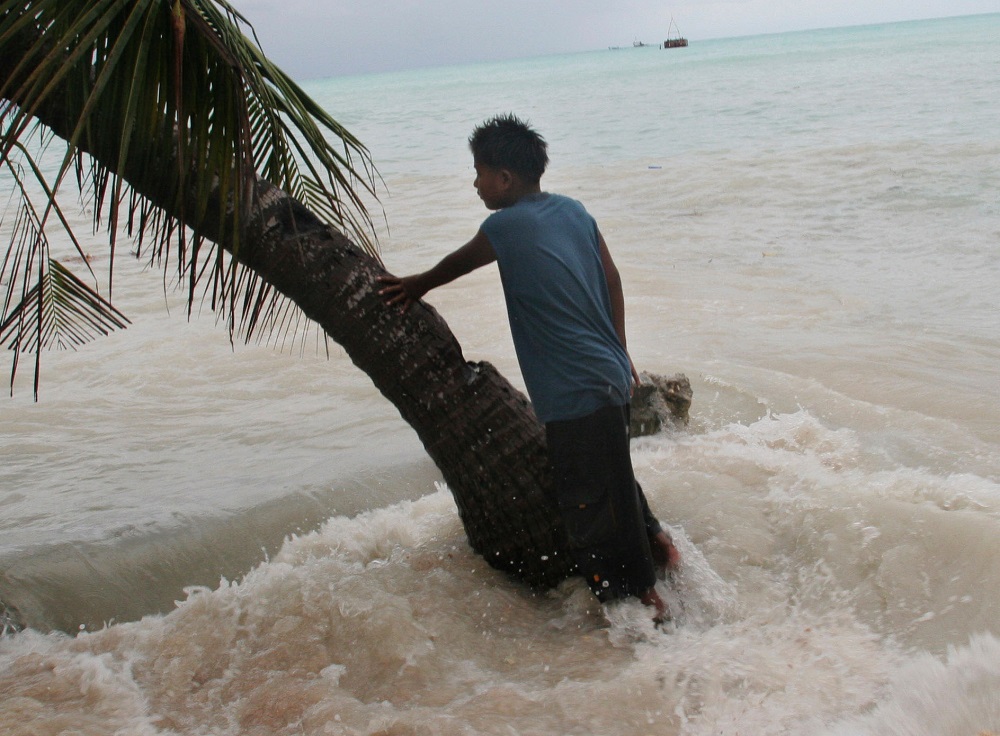
The following post is adapted from the foreword to ASPI’s latest special report, A Pacific disaster prevention review, released this week.
ASPI’s review of disaster prevention in the Pacific is a welcome initiative, coming as it does in a time of increased pressure on Pacific island nations from the combined threats of the global climate emergency and the Covid-19 pandemic.
The review serves as a platform for the small island developing states of the Pacific to share experiences learned from fighting this dual challenge and to explore how the new layer of complexity provided by Covid-19 has impacted on progress in the integration of disaster risk reduction and climate change adaptation as a core part of their national development.
Such integrated risk management has become embedded at the national level through the joint national action plan processes, which Tonga pioneered in 2010. It has also guided regional-level policy, notably the landmark Framework for Resilient Development in the Pacific.
This policy is an outstanding example of putting the Sendai Framework for Disaster Risk Reduction (2015–2030) into action by strengthening governance to better manage disaster risk in a part of the world where global warming has combined with other risk drivers to pose an existential threat to a centuries-old way of life. It has also helped to develop a better understanding of disaster risk among the public at large, increase investment in disaster risk reduction and pave the way for more effective preparedness and response.
The impressive recovery in Fiji after Tropical Cyclone Winston, the risk-informed recovery budget of the government of Tonga after Cyclone Gita, and the prompt evacuations of Ambae Island in Vanuatu because of volcanic eruptions are just three of several examples of ‘Sendai in action’ across the region.
Regional recovery and resilience capacities are being further tested following Tropical Cyclone Harold, which caused widespread destruction in Solomon Islands, Vanuatu, Fiji and Tonga in April just as lockdown measures were being introduced across the Pacific to keep the new coronavirus at bay.
The combined challenge of the cyclone season and Covid-19 has brought into stark relief the important role of public health services in a disaster-prone region where such services are not always of the standard required. The lack of laboratory testing for Covid-19 and the economic impact of the pandemic on tourism and business continuity make the disaster response environment even more challenging. Nonetheless, taking stock of regional achievements in disaster risk reduction policy and practice is important alongside identifying the areas where the region needs to focus most in the coming years.
This is why the Pacific Disaster Prevention Review is so critical. It’s an important initiative to examine progress in implementing the Sendai Framework across the Pacific and to provide a range of independent views that will stimulate efforts to reduce disaster losses in the region.
It will also provide a vital boost to implementing target (e) of the Sendai Framework, which seeks a substantial increase in the number of national and local strategies for disaster risk reduction by the end of the year and the inclusion of pandemic preparedness, which has not always been a priority.
Five years into the Sendai Framework era, the Pacific region has come a long way. At the same time, it still has some way to go to achieve its agreed vision of a resilient future for its people, societies, economies and cultures and for the natural environment.
With sea-level rises in some countries four times greater than the global average, Pacific island countries and territories are on the front line of the escalating climate crisis. As coastal areas and degraded inland areas become uninhabitable, people will seek safety and better lives elsewhere. The very survival of communities and countries is at stake in the coming decades.
In such a challenging context, disaster risk reduction is truly a matter of survival. A resilient Pacific depends on achieving the targets for reducing disaster losses and building resilience set out in the Sendai Framework.

